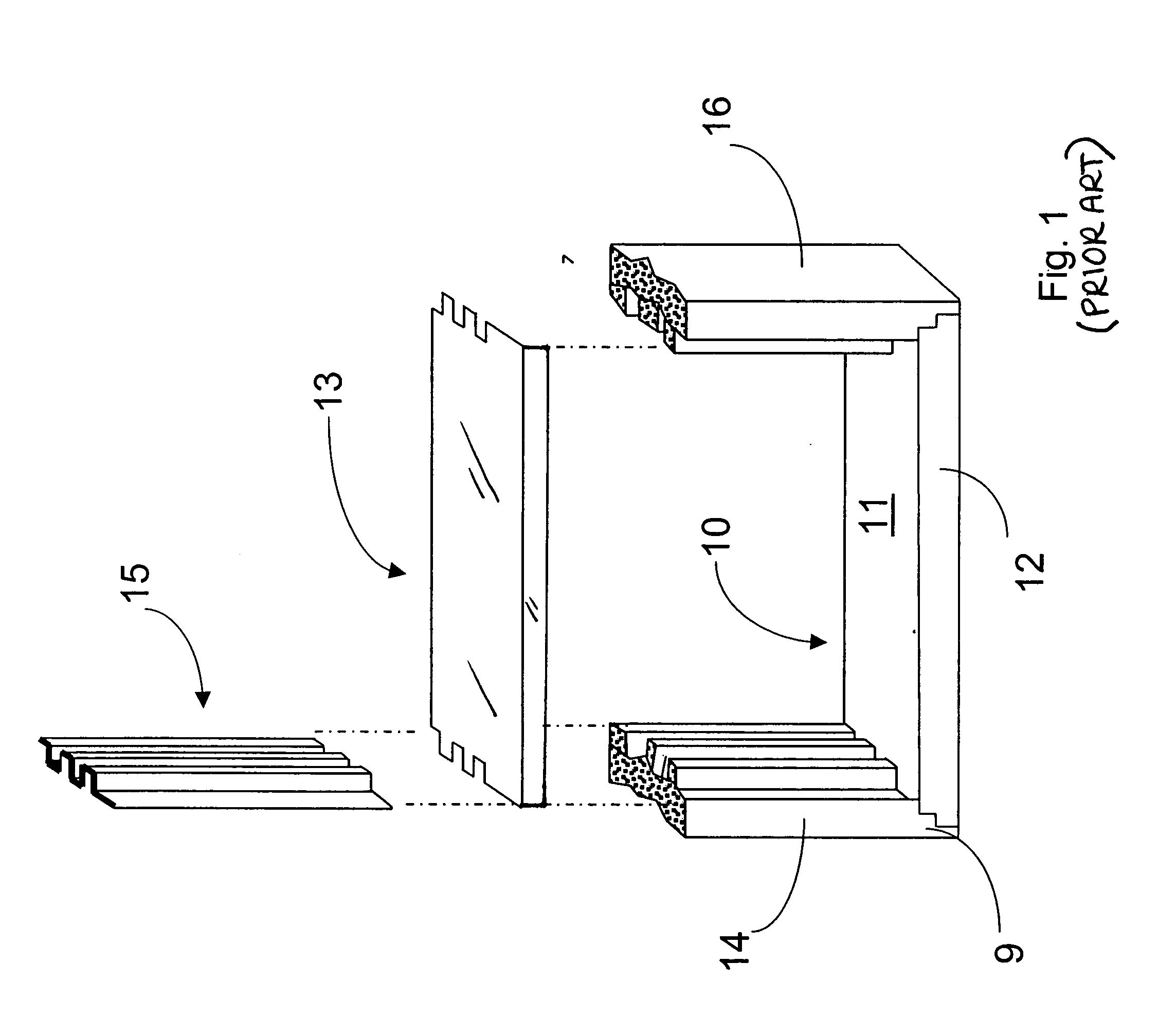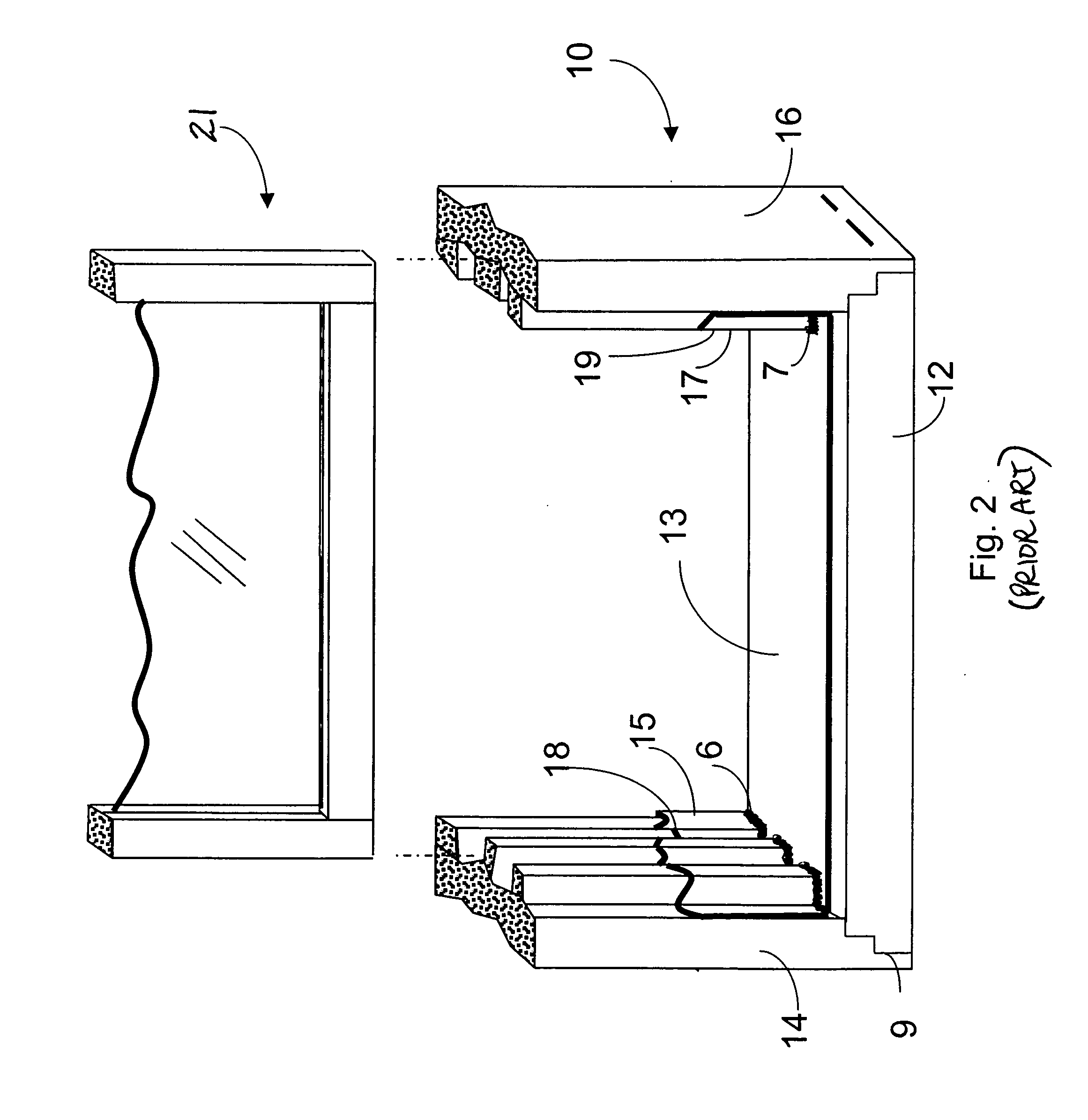Clad window frame with improved sealing
a window frame and sealing technology, applied in the field of fenestration, can solve the problems of considerable skill and patience required during application, water leakage to the underlying wooden window frame elements, and particularly troublesome joints, and achieve the effects of reducing the criticality of traditional sealants
- Summary
- Abstract
- Description
- Claims
- Application Information
AI Technical Summary
Benefits of technology
Problems solved by technology
Method used
Image
Examples
Embodiment Construction
[0015] Referring now in more detail to the drawing figures, wherein like reference numerals indicate, where appropriate, like parts throughout the several views, FIGS. 1 and 2 illustrate, in simplified form, a prior art clad window unit, which is discussed in some detail above. FIGS. 3 through 6 illustrate embodiments of the present invention, which will now be discussed in more detail.
[0016]FIG. 3 shows an improved window sill cladding in the form of a barrier pan 31 that embodies principles of the present invention in one preferred form. The window barrier pan preferably is molded of a single unitary piece of relatively thin-walled water proof material such as, for instance, PVC plastic. The barrier pan 31 generally is shaped and configured to conform to the profile of the window sill it will cover. More specifically, the barrier pan 31 has a relatively flat floor 32 that is shaped to conform to the profile of the upper surface of a window sill. The floor 32 extends outwardly to ...
PUM
 Login to View More
Login to View More Abstract
Description
Claims
Application Information
 Login to View More
Login to View More - Generate Ideas
- Intellectual Property
- Life Sciences
- Materials
- Tech Scout
- Unparalleled Data Quality
- Higher Quality Content
- 60% Fewer Hallucinations
Browse by: Latest US Patents, China's latest patents, Technical Efficacy Thesaurus, Application Domain, Technology Topic, Popular Technical Reports.
© 2025 PatSnap. All rights reserved.Legal|Privacy policy|Modern Slavery Act Transparency Statement|Sitemap|About US| Contact US: help@patsnap.com



